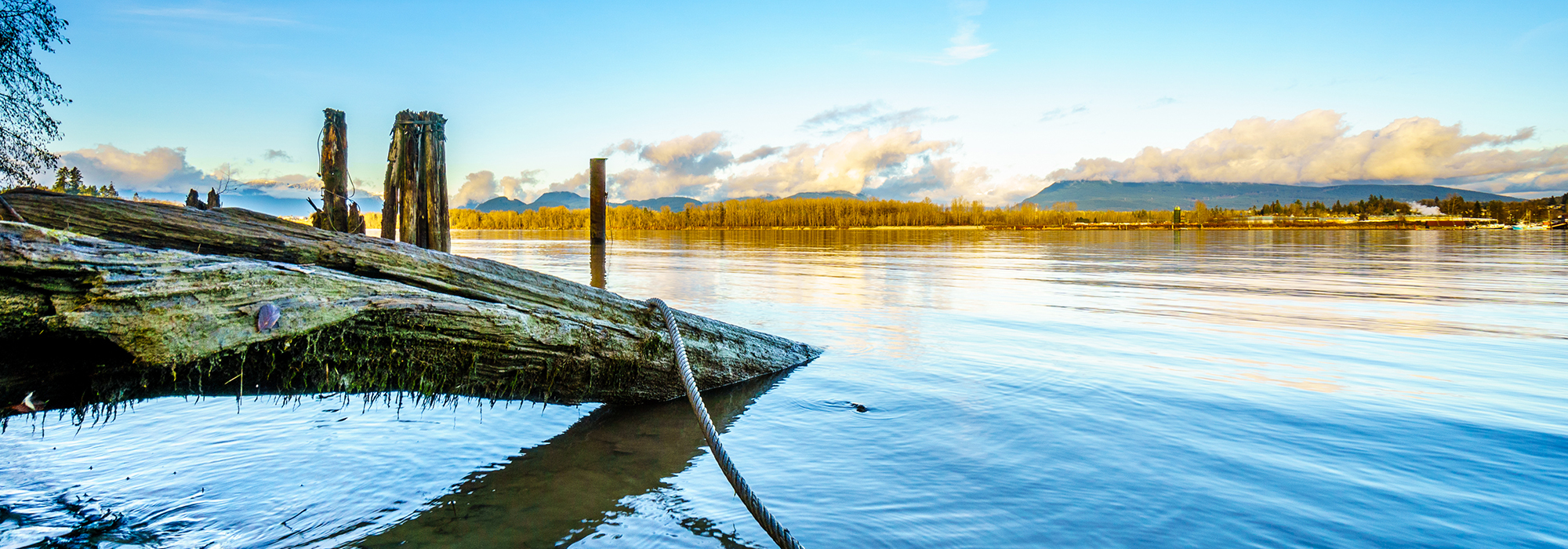
Canada is endowed with a rich freshwater heritage that is vitally important for all Canadians, coast to coast to coast. Water is a factor in the myriad issues of the day: from energy production and agriculture to drinking water security and resource extraction, fresh water is the absolute foundation of any sustainable resource development and management regime. For Indigenous peoples, water is not only essential to their constitutionally protected rights but also integral to their connections to the land, spiritual and physical well-being and community and economic development.
Water’s uneven distribution over the landscape, its disregard for political boundaries and its seasonal and annual variability pose real challenges for management and governance. Until recently, considerations of “sustainability” were secondary to the priority of building Canada’s resource-based economies. Past water management practices, and even many current ones, have struck an unsustainable balance between choices such as developing the economy or protecting the environment. These practices have been based primarily on draining, channelling, damming and diverting water out of streams, lakes and aquifers and dumping waste back into those systems. In the process, watersheds have become fragmented and natural capital has been degraded. Community and citizen concern is mounting.
Across the country, troubling issues affecting fresh water are on the rise, with severe implications for Canadian communities, ecosystem health and the economy. The Inquiry on Federal Water Policy and the resulting federal water policy published in 1987 aimed to address many of these growing concerns and to modernize Canada’s management regime, but that policy was never fully implemented. Provinces and territories, as the level of government primarily responsible for water management, have stepped into this policy void: nearly every jurisdiction across Canada has responded by starting to develop a water policy, often supported by a water law reform initiative. There have been notable initiatives over the past 15 years in Alberta, Quebec, Ontario, the Northwest Territories and British Columbia.
An important step toward a more coordinated provincial-territorial approach to address the federal government’s lack of action on water came in 2010, when Canada’s premiers endorsed a nationwide Water Charter. They then created the Water Stewardship Council (2011-14) — a part of the Council of the Federation. The Water Stewardship Council recognized that water is a vital natural resource and that a growing market for water technology exists that should be incorporated into infrastructure plans across the country. The provincial and territorial leaders were advised by the Water Stewardship Council and leading experts, who emphasized that a scientific approach and monitoring are essential for tracking changes to water systems under a changing climate, and that the protection of drinking water sources is of paramount importance, especially in rural areas.
Although this initiative never fulfilled its potential, the Water Stewardship Council did lay the foundation for various provincial and territorial efforts to advance water management as a policy and law reform priority. Many innovative approaches to ensure the health of our shared waters are currently under way, including the recent series of Mackenzie River Basin Bilateral Water Agreements signed between the Northwest Territories, Alberta, British Columbia and the Yukon, which set a high bar for provincial-territorial-Indigenous cooperation and ecosystem protection.
Developing solutions to complex water issues is one of Canada’s major policy challenges and should be a government priority for the coming decade. British Columbia in particular is at a critical moment: it has a window of opportunity to embark on a bold new freshwater agenda based on the principles of robust management and transparent and effective governance.
The need for change from the status quo in BC is clear. With devastating fires blazing through the Interior only weeks after stories of severe flooding dominated headlines, British Columbia is being reminded yet again what the “new normal” of more frequent and extreme weather-related events might look like in the province. The implications of climate change for our freshwater systems and community well-being are grave: it exacerbates existing problems like overpumped groundwater aquifers, degraded drinking water sources and extreme floods and droughts.
A comprehensive policy foundation for addressing BC’s water issues has already been established. Almost 10 years ago, the British Columbia government responded to many of the province’s emerging water challenges in its visionary water strategy, Living Water Smart. Living Water Smart ushered in a fundamental change in water policy, with stronger emphasis on sustainability, cooperation and integrated decision-making. Living Water Smart led directly to the Water Sustainability Act, which replaced the outdated 107-year-old Water Act. The new legislation was passed with an initial set of supporting regulations in 2016.
The Water Sustainability Act has several promising features that can better protect BC’s fresh water, including the following:
- regulation of groundwater use for the first time;
- enhanced legal protections to sustain adequate water flows for fish and ecosystems (known as “environmental flows”);
- new mechanisms to require that land use decisions (for instance, for forestry, mining or urban development projects) explicitly consider freshwater quality and quantity; and
- innovative legal options for improved watershed planning and shared decision-making.
However, many of the critical details of the legislation have yet to be developed. Full implementation of this Act hinges on developing and passing more of the necessary supporting regulations to fulfill the new law’s potential. With water problems on the rise in BC, it is urgent to implement these remaining regulations and other supporting commitments, such as a comprehensive reform of water rental rates to ensure sufficient revenue for effective provincial water planning and management. The University of Victoria’s POLIS Water Sustainability Project proposed a blueprint in 2014 for a meaningful move toward improved management and accountability and a more sophisticated partnership approach that engages all levels of government (including Indigenous nations), watershed groups and communities to better manage and govern fresh water.
With a new provincial government, British Columbia has a fresh opportunity to bring new energy to the work that was initiated a decade ago, reinforcing the role of water as the foundation of a more sustainable economy and a water-centred nintegrated resource management regime. To help guide the new government’s priorities for fresh water, POLIS has set out a bold plan, A Revitalized Water Agenda
for British Columbia’s Circular Economy, with the necessary elements and actions required to bring a new water agenda into effect for BC. These are its priority policy solutions:
- Follow through on comprehensive implementation of the Water Sustainability Act, including the next phase of regulations. Top priorities include further direction on watershed planning and governance provisions and an environmental flow regulation to provide transparency to decisions and ensure an adaptive risk management approach with environmental flow protections in law.
- Increase provincial water rental rates to better reflect the value of the resource, promote conservation and drive technological innovation. Although a new water fees and rentals scheme came into effect in 2016, it is insufficient to fund implementation (management, planning, enforcement and governance) of the Water Sustainability Act.
- Acknowledge Indigenous water rights and set standards and thresholds for environmental flows that incorporate local traditional knowledge, providing sufficient water for existing rights and other cultural and spiritual uses. Use collaborative consent for rebuilding a government-to-government approach with Indigenous nations, and fulfill commitments to implement the United Nations Declaration on the Rights of Indigenous Peoples, which says, “States shall consult and cooperate in good faith with the indigenous peoples concerned through their own representative institutions in order to obtain their free and informed consent prior to the approval of any project affecting their lands or territories and other resources, particularly in connection with the development, utilization or exploitation of mineral, water or other resources.”
- Build resilience against floods and droughts, including taking comprehensive water conservation measures, protecting critical ecosystems (such as wetlands and riverbanks), reconnecting floodplains to enhance natural flood and drought buffers, and securing water for agriculture.
- Implement water-centred land use planning in watersheds, with a focus on quality and quantity that builds public confidence and better engages local communities. These plans should shape land use decisions through an explicit water sustainability lens. Protection of community drinking water sources must be secured ahead of other resource development activities.
- Review and modernize the professional reliance model (the practice of accepting and relying on advice from registered professionals on environmental management and decisions) to require better oversight and accountability. In addition, empower a provincial body to provide independent oversight of BC’s land and water to ensure accountability and drive these necessary government changes.
With this new agenda, British Columbia will continue to build on recent national progress and can lead the rest of Canada in protecting and supporting vital ecosystems. A truly modern integrated water-centred approach can ensure growing water security, rebuild relationships with Indigenous nations, increase public confidence through evidence-based decision-making, reduce conflicts as natural capital is protected and strengthen our ability to adapt to the coming changes both in climate and in society’s priorities.
Photo: Sunset over the Fraser River and Brae Island at Fort Langley, BC. (Shutterstock/Harry Beugelink)
Do you have something to say about the article you just read? Be part of the Policy Options discussion, and send in your own submission. Here is a link on how to do it. | Souhaitez-vous réagir à cet article ? Joignez-vous aux débats d’Options politiques et soumettez-nous votre texte en suivant ces directives.













